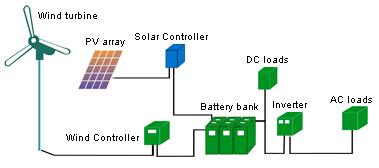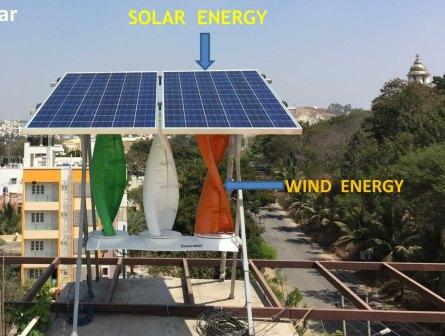
What is a Sustainable House?
Sustainable house– Its a home which is constructed by using eco-friendly raw materials ,it is designed in a way that it depends more on natural sources for lighting, cooling and its energy needs, it should consume very low energy and energy is recycled wherever possible.
How to construct Sustainable Homes?
1 .Orientation-Rooms in the house should be oriented in a way that it allows wind and sunlight to naturally enter the house if it is located in hot climate region. Plantation near windows can be done to block glares and direct heat of sunlight.
2. Cool Roof: A roof which is not good at insulating heat can impact cooling, raise house temperature and increase energy demands of house. A cool roof can block heat and reflect radiations back into atmosphere. Cool roof can be created using green roof which is created by using soil and plantation on roof area ,these plantations grow on waterproofing membrane.
>Another way is to use cool roof coatings, which come in light colors. Cool roof coatings (or paint) have higher reflectivity and emissivity when compared with normal roof materials and coatings which helps in keeping the roof cooler.
>Solar panels can be mounted on roof area which will serve both as place of its installation and blocking heat.
>White reflective tiles can also be used on roofs to reflect back the heat. Also single-ply membranes can be used which are prefabricated plastic or vinyl sheets containing solar reflective coatings or materials.
Step wise designing of Cool roof has been explained here.
>We may also construct Green Roof or Living Wall:
By Installing a green roof with vegetation to improve insulation and manage rainwater and a living wall can be created with plants to enhance air quality and aesthetics.
3.Water Conservation:
Water conservation is crucial for sustainable homes, as it helps reduce the overall demand for water resources and minimizes the environmental impact associated with water consumption. Here are some practical tips for water conservation in homes:
- Fix Leaks: Leaking faucets, pipes, and toilets can waste a significant amount of water over time. Regularly check for and promptly repair any leaks in your home.
- Install Water-Efficient Fixtures: Replace old toilets, faucets, and showerheads with water-efficient models. Look for fixtures with the WaterSense label, which indicates that they meet water efficiency and performance criteria set by the Environmental Protection Agency (EPA).
- Collect Rainwater: Install rain barrels to collect rainwater from your roof. This harvested rainwater can be used for watering plants and gardens, reducing the need for potable water.
- Choose Water-Efficient Appliances: When purchasing appliances like washing machines and dishwashers, opt for models that have high Energy Star and WaterSense ratings. These appliances use less water and energy, contributing to overall sustainability.
- Implement Greywater Systems: Greywater is gently used water from bathroom sinks, showers, tubs, and washing machines. Implementing a greywater system allows you to reuse this water for activities like landscape irrigation, reducing the demand on freshwater resources.
- Install Drip Irrigation: Drip irrigation systems deliver water directly to the base of plants, minimizing water wastage compared to traditional sprinkler systems. They are also more efficient in providing water to the roots where it’s needed.
- Mulch Your Garden: Applying a layer of mulch around plants helps retain soil moisture, reducing the frequency of watering. Mulching also prevents evaporation, protecting the soil from drying out.
- Watering Wisely: Water your garden during the early morning or late evening to reduce evaporation. Adjust your sprinklers to avoid watering sidewalks and driveways, focusing on the plants that need it most.
- Educate and Involve Family Members: Ensure that everyone in the household is aware of the importance of water conservation and encourage them to adopt water-saving habits.
- Xeriscaping: Consider xeriscaping, a landscaping method that uses drought-resistant plants and efficient irrigation to create water-efficient outdoor spaces.
- Monitor Water Usage: Install water meters to monitor your water consumption regularly. This awareness can help you identify and address any spikes in water usage promptly.
Rainwater harvesting systems are also integrated to collect and reuse rainwater for landscaping or non-potable uses. Rainwater can be used for recharging ground water level using earth pits for collecting rain water.
We can Capture rainwater for landscape irrigation, flushing toilets, and other non-potable uses. Also we can Implement a graywater system to recycle water from sinks, showers, and laundry for landscape irrigation.
4.Meeting energy demands:
This is one of the most important part of constructing sustainable homes. A hybrid system which can incorporate solar , wind & other sustainable sources should be used which can produce energy in all types of weather. Many hybrid systems are stand-alone systems, which operate off-grid-that is, not connected to an electricity distribution system ,they can operate as On-grid system as well. Below is connection diagram for solar and wind hybrid system:

An actual system looks like this:

(Pc-Lavancha.in)
There are many companies which offer these energy solutions from installation to maintenance. Tesla also offer service for installing solar roof and solar poweralls in the US.We may also install a comprehensive energy monitoring system to track energy consumption and production. This will allow homeowners to identify areas of improvement and optimize energy usage.
>Other than this it is also important that all electrical equipment used are of high efficiency and they consume very less power.
Here are some strategies for ensuring energy sustainability in homes:
- Energy-Efficient Appliances: Choose energy-efficient appliances and electronics with high Energy Star ratings. These devices consume less energy, saving you money on utility bills and reducing your overall carbon footprint.
- LED Lighting: Replace incandescent bulbs with energy-efficient LED or CFL bulbs. LED bulbs use significantly less energy and have a longer lifespan, contributing to both energy and cost savings.
- Smart Thermostats: Install a smart thermostat to optimize heating and cooling in your home. These devices can learn your preferences, adjust temperatures based on occupancy, and can be controlled remotely, helping you reduce energy waste.
- Proper Insulation: Ensure your home is well-insulated to minimize heat loss in the winter and heat gain in the summer. Adequate insulation helps maintain a comfortable indoor temperature with less reliance on heating and cooling systems.
- Seal Air Leaks: Identify and seal any gaps or leaks in doors, windows, and walls. This prevents drafts and minimizes the need for excessive heating or cooling to maintain a comfortable indoor environment.
- Solar Panels: Consider installing solar panels on your roof to generate clean, renewable energy. Solar power can significantly reduce your dependence on traditional energy sources and lower your electricity bills over time.
- Energy-Efficient Windows: If possible, upgrade to energy-efficient windows that provide better insulation and reduce heat transfer, helping to maintain a consistent indoor temperature.
- Use Renewable Energy Sources: If available, consider purchasing renewable energy from your utility provider. Many utilities offer options for sourcing a percentage or all of your electricity from renewable sources such as wind or solar.
- Energy Audits: Conduct an energy audit to identify areas for improvement. Professional audits or DIY assessments can help you understand your energy consumption patterns and prioritize energy-saving measures.
- Energy-Efficient HVAC Systems: If it’s time to upgrade your heating, ventilation, and air conditioning (HVAC) system, choose energy-efficient models. Modern systems are designed to be more efficient and environmentally friendly.
- Energy-Efficient Landscaping: Strategically plant trees and shrubs around your home to provide shade in the summer and windbreaks in the winter. This can help regulate indoor temperatures and reduce the need for heating and cooling.
- Energy Conservation Habits: Encourage energy-saving habits among household members, such as turning off lights and electronics when not in use, using natural light during the day, and avoiding unnecessary heating or cooling.
5.Smart Home Automation: We can utilize smart home technologies to control and optimize energy usage. This includes programmable thermostats, occupancy sensors, and smart lighting systems that can be controlled remotely or automated based on occupancy. Most of the electrical equipment are also being made smart which can be operated using smartphones and from remote. Smart home automation will minimize human errors in conserving energy.
6. Greenery :Green spaces and gardens can be incorporated to enhance biodiversity and create a connection with nature which is very important for both mental and physical health.
Incorporating greenery into sustainable homes offers numerous benefits, ranging from improved indoor air quality to enhanced well-being. Here are several ways to integrate greenery into your home for a more sustainable and healthy living environment:
- Indoor Plants: Adding indoor plants is one of the simplest and most effective ways to bring greenery into your home. Plants not only contribute to a visually appealing space but also help purify indoor air by removing pollutants. Some air-purifying plants include snake plant, spider plant, peace lily, and pothos.
- Vertical Gardens: Create vertical gardens on interior or exterior walls to maximize the use of space. Vertical gardens not only add a touch of nature to your home but also provide insulation, reducing the need for heating and cooling.
- Green Roofs: Consider installing a green roof, which involves growing vegetation on the roof of your home. Green roofs provide insulation, reduce stormwater runoff, and contribute to the overall energy efficiency of the building.
- Atriums and Skylights: Design your home with atriums or skylights to allow ample natural light to penetrate indoor spaces. This not only reduces the need for artificial lighting during the day but also promotes plant growth.
- Rain Gardens: Create rain gardens to capture and filter rainwater runoff. Plant native, water-loving vegetation in these areas to absorb excess water, reduce erosion, and create a visually pleasing outdoor space.
- Permeable Surfaces: Use permeable surfaces in outdoor areas, such as driveways and pathways, to allow rainwater to penetrate the ground instead of running off. This promotes groundwater recharge and supports plant growth.
- Edible Gardens: Grow your own fruits, vegetables, and herbs in a sustainable, organic garden. This not only provides a local and fresh food source but also reduces the environmental impact associated with the transportation and packaging of store-bought produce.
- Natural Landscaping: Choose native and drought-resistant plants for landscaping. These plants are adapted to the local climate, requiring less water and maintenance. Additionally, they support local ecosystems and biodiversity.
- Use of Reclaimed Wood: Incorporate reclaimed or sustainably sourced wood into your home’s design. This not only adds a natural aesthetic but also promotes responsible forestry practices.
- Biophilic Design: Implement biophilic design principles, which focus on connecting people with nature. This can involve incorporating natural materials, colors, and textures into your home’s design to create a more harmonious and calming living space.
- Composting: Set up a composting system for kitchen waste and use the compost to nourish your plants. Composting reduces the amount of organic waste sent to landfills and enriches the soil with valuable nutrients.
- Energy-Efficient Greenhouses: If space allows, consider building a small greenhouse to grow plants and herbs year-round. This can contribute to sustainable food practices and serve as an educational tool for understanding plant life cycles.
Read more about these homes here.